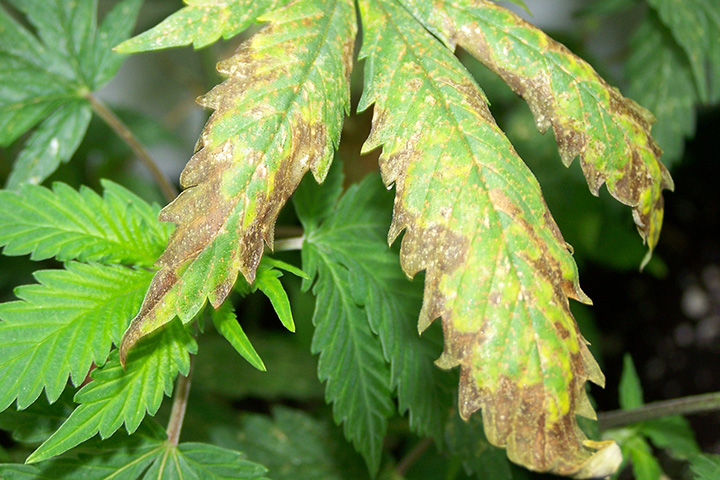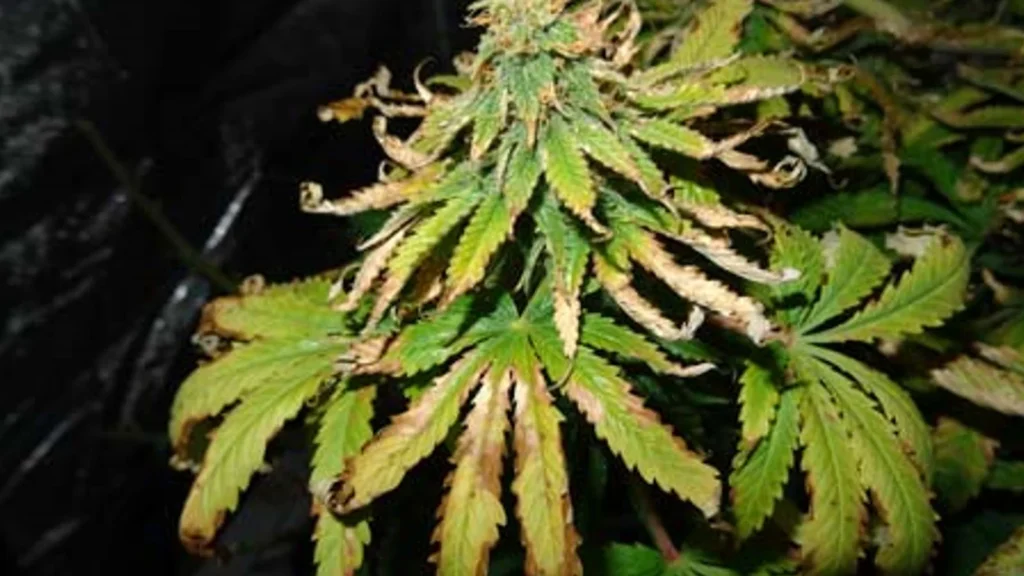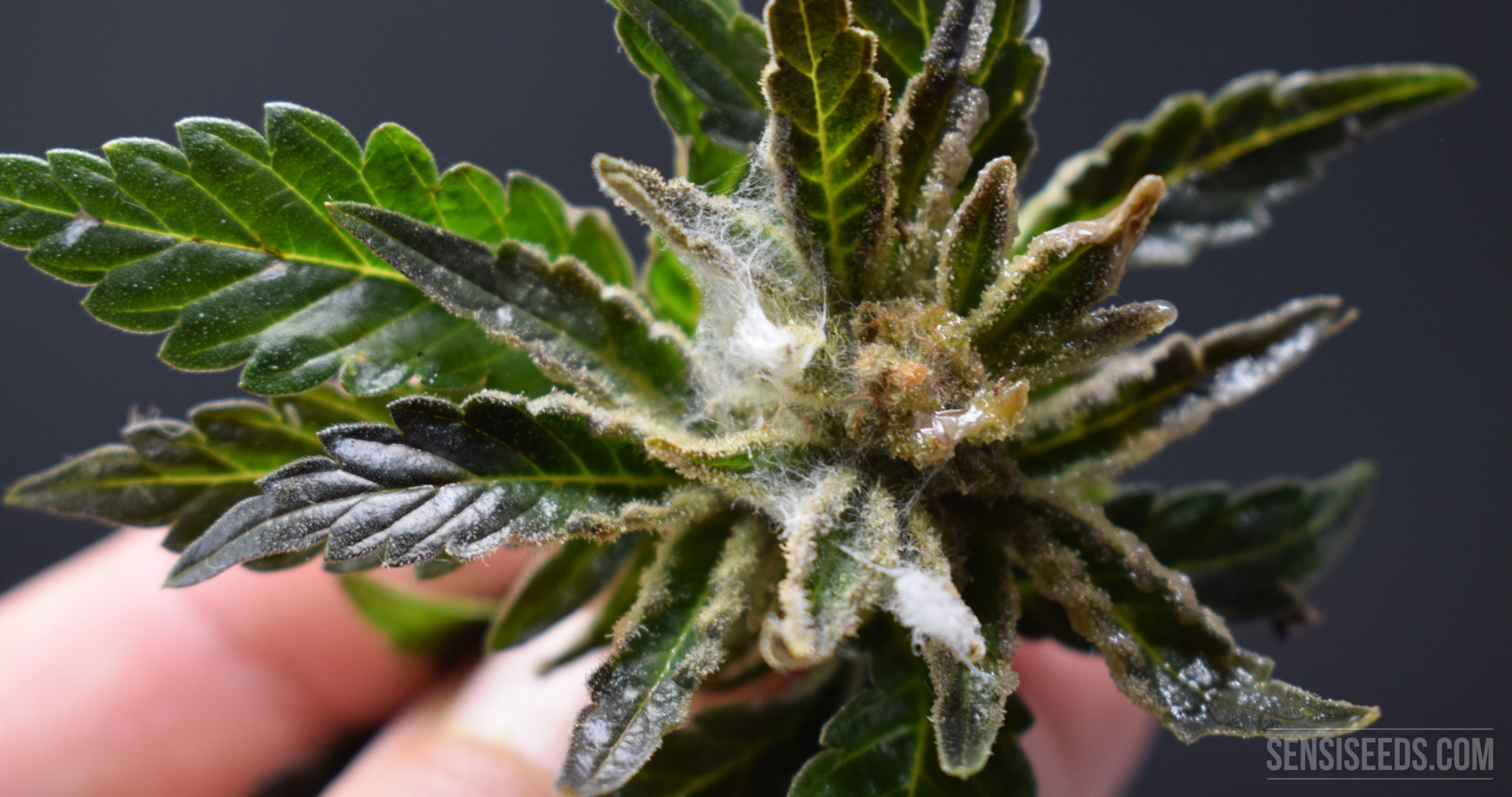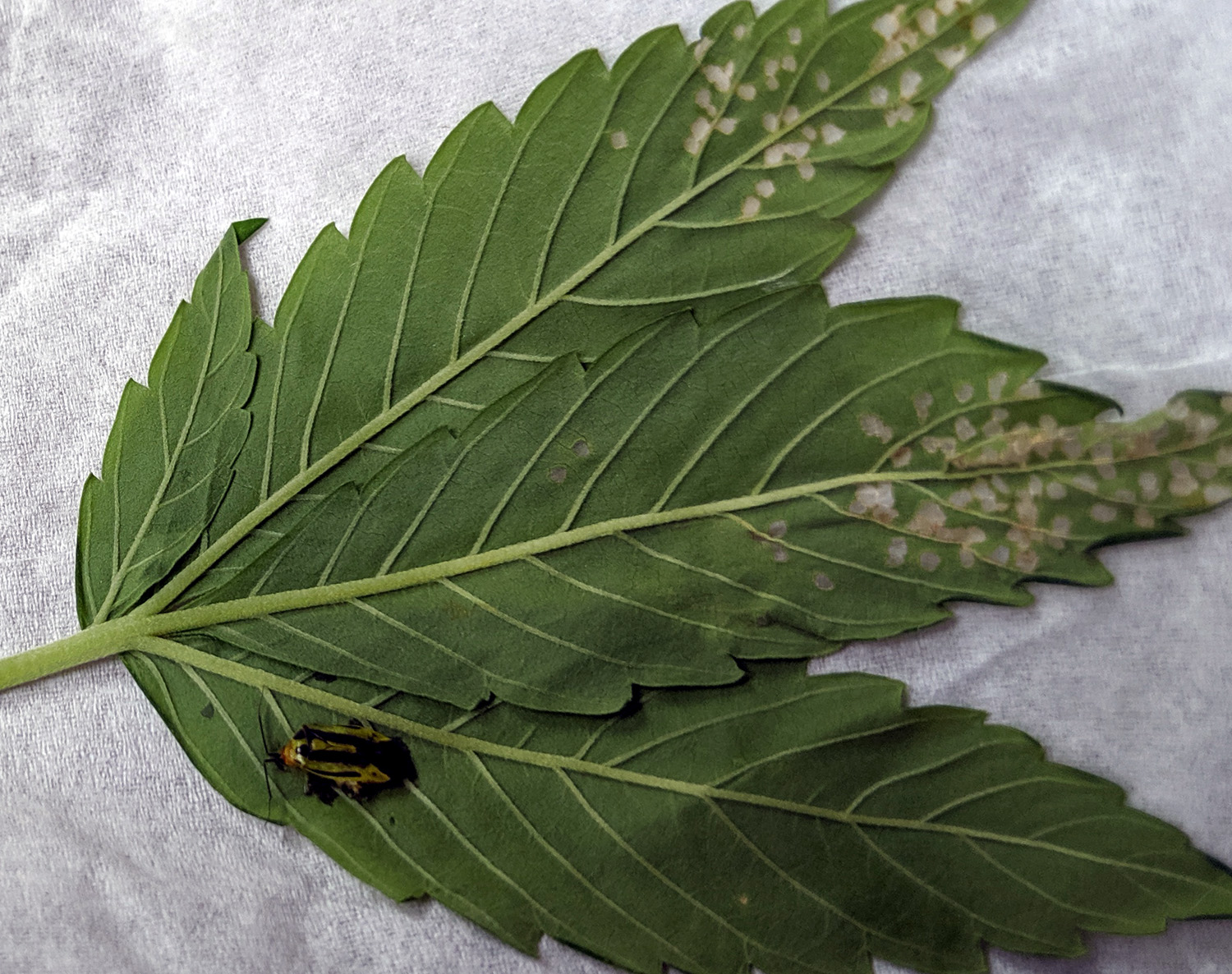Cannabis cultivation can be a rewarding experience, but it also comes with its challenges.
As a grower, it is crucial to be able to identify and address common cannabis ailments that can affect the health and productivity of your plants. In this comprehensive guide, we will walk you through the essential steps of recognizing and treating various cannabis problems, ensuring that you achieve successful harvests every time.

The Importance of Identifying and Treating Cannabis Ailments
One of the key factors that determine a successful cannabis harvest is the overall health of your plants. Just like any other living organism, cannabis plants are susceptible to various issues, including nutrient deficiencies, pests, and fungal infections. Ignoring or overlooking these problems can lead to stunted growth, reduced yields, and even the loss of entire crops.
For inexperienced growers, recognizing these ailments can be particularly challenging. Many symptoms may appear similar or vague, making it difficult to pinpoint the exact problem. However, with the right knowledge and guidance, you can become a proactive and successful cannabis cultivator, ensuring that your plants thrive throughout their lifecycle.
Nutrient-Related Cannabis Problems
Nutrient Burn
One of the most common nutrient-related issues that cannabis growers encounter is nutrient burn. Nutrient burn occurs when cannabis plants receive excessive nutrients, particularly nitrogen, phosphorus, or potassium. The excess nutrients accumulate in the plant tissues, causing the tips of the leaves to turn yellow or brown and become dry and brittle.
Signs and Symptoms: Look out for the following signs of nutrient burn in cannabis plants:
- Yellow or brown tips on leaves, which may curl downwards.
- Burnt or scorched appearance at the leaf edges.
- Overall dark green foliage due to excessive nitrogen.
Treatment: To address nutrient burn, it is essential to follow a strict feeding calendar and provide the correct nutrient balance. Regularly check the pH and electrical conductivity (EC) levels of your nutrient solution to ensure they are within the optimal range for cannabis growth.
Chemical vs. Organic Fertilizers: It's worth noting that chemical fertilizers are more likely to cause nutrient burn due to their fast-release nature. Organic fertilizers, on the other hand, release nutrients slowly, reducing the risk of nutrient burn.

IMAGE: Grasscity
Nutrient Lockout
Nutrient lockout is another common issue caused by imbalanced nutrient solutions. It occurs when certain nutrients become unavailable to the plant due to changes in pH levels or interactions between different elements. As a result, even if the nutrients are present in the growing medium, the plant cannot absorb them properly.
Causes and Consequences: Nutrient lockout is often a result of incorrect pH levels in the root zone. For example, if the pH is too high or too low, the plant's root system cannot uptake essential minerals effectively. This can lead to deficiencies in vital nutrients, affecting the overall growth and health of the cannabis plant.
Treatment: The first step in treating nutrient lockout is to flush the growing medium with pH-balanced water to remove any accumulated salts or imbalanced nutrients. After flushing, adjust the pH of the nutrient solution to the appropriate range for cannabis cultivation.

IMAGE: Future Harvest
Environmental Cannabis Plant Problems
Heat Stress or Cold
Environmental factors, such as temperature fluctuations, can significantly impact cannabis plants. When exposed to extreme heat or cold, cannabis plants may experience stress, leading to various issues.
Impact of Temperature Fluctuations: High temperatures can cause wilting, leaf curling, and even scorched leaves. On the other hand, cold temperatures can slow down growth and make plants more susceptible to diseases and pests.
Regulating Temperature: For indoor growers, maintaining a stable temperature within the optimal range (around 70-85°F or 20-30°C) is crucial. Outdoor growers can use protective measures, like greenhouses or cold frames, to shield plants from extreme weather conditions.

IMAGE: Dutch Passion
Light Burn
Cannabis plants require a certain amount of light for healthy growth, but excessive light can lead to light burn. Light burn occurs when plants are exposed to intense light for prolonged periods, causing damage to the leaves and overall plant health.
Effects of Excessive Light: Light burn manifests as bleached or yellowing leaves, with brown spots or burned edges. The plant may also show signs of stress, such as drooping and reduced growth.
Preventing Light Burn: Adjust the distance between the light source and the canopy to ensure the plants receive the appropriate amount of light. Consider using light movers or diffusers to distribute light more evenly and reduce the risk of burning.

IMAGE: Mr Grow It
Wind Damage
Strong winds can be detrimental to outdoor cannabis plants, especially during the vegetative stage when the plants are young and vulnerable.
Effects of Wind: Wind can physically damage plants, causing broken stems, torn leaves, and uprooted seedlings. Additionally, strong winds can lead to increased transpiration, drying out the plants and hindering nutrient uptake.
Protecting Outdoor Plants: Create windbreaks using fences, trees, or shrubs to shield your cannabis garden from strong winds. Staking or supporting young plants can also prevent wind damage.
Cannabis Moulds: Bud Rot and Powdery Mildew
Molds are a serious concern for cannabis growers as they can quickly spread and devastate an entire crop if not promptly addressed. Two common molds that affect cannabis plants are bud rot and powdery mildew.
White Powdery Mildew (WPM)
White powdery mildew is a common fungal infection that affects cannabis plants, especially in humid conditions.
Appearance and Effects: WPM appears as white, powdery spots on the leaves, stems, and buds of cannabis plants. As the infection progresses, the affected areas may become necrotic and hinder photosynthesis.
Management and Prevention: To manage WPM, isolate infected plants to prevent the spread and prune affected areas. Improve airflow and reduce humidity in the grow space to deter WPM growth.
Botrytis (Bud Rot)
Botrytis, also known as bud rot, is a destructive fungal infection that targets the buds of cannabis plants.
Signs and Consequences: Infected buds develop brown or gray fuzzy growth and emit a musty smell. Botrytis-infected buds become unsmokable and can ruin an entire harvest.
Dealing with Botrytis: Remove infected buds and adjust environmental conditions to lower humidity. Proper air circulation and keeping plants dry can help prevent botrytis from spreading.

IMAGE: Sensi Seeds
Identifying Common Cannabis Fungi
Fusarium
Fusarium is a soil-borne fungus that attacks the root system of cannabis plants, leading to root rot and wilting.
Impact on Cannabis Crops: Fusarium can cause significant damage to the root structure, leading to nutrient deficiencies, wilting, and eventually plant death.
Identification and Management: Look for wilting, yellowing leaves, and stunted growth. Use sterilized soil and avoid overwatering to prevent fusarium infestations.
Verticillium
Verticillium is another soil-borne fungus that affects the vascular system of cannabis plants.
Symptoms and Effects: Verticillium infection leads to yellowing leaves, wilting, and slow plant growth. The fungus restricts the flow of nutrients through the plant's vascular system.
Prevention and Treatment: Choose resistant cannabis strains and avoid using infected soil. Removing and destroying infected plants can prevent further spread.
Common Cannabis Pests
Spider Mites
Spider mites are tiny pests that infest the undersides of cannabis leaves and suck the sap from plant tissues.
Identification and Reproduction: Spider mites are barely visible to the naked eye and reproduce rapidly in hot, dry conditions.
Combatting Spider Mites: Regularly inspect plants for signs of mite infestations. Introduce natural predators like ladybugs or use organic miticides for control.
Aphids
Aphids are small, soft-bodied insects that suck the sap from cannabis plants.
Impact on Plants: Aphid infestations cause distorted leaves, stunted growth, and the secretion of honeydew, which attracts mold.
Natural Solutions: Encourage beneficial insects like ladybugs and lacewings to control aphid populations. Insecticidal soaps or neem oil can also be effective.

IMAGE: College of Agricultural Sciences
Hermaphroditism in Cannabis Plants
Hermaphroditism refers to cannabis plants developing both male and female reproductive organs.
Survival Mechanism: Hermaphroditism can be triggered by stress, such as light interruptions or nutrient imbalances. It is a survival mechanism for the plant to self-pollinate in unfavorable conditions.
Handling Hermaphroditism: Remove hermaphroditic plants from the grow area to prevent pollination of female plants. Identify and address the stressors that may have caused the condition.
Conclusion
Recognizing and treating common cannabis ailments is vital for successful cultivation. By understanding the signs and employing the right techniques, you can maintain healthy plants and achieve bountiful harvests. Stay vigilant and proactive in caring for your cannabis crop, and you'll reap the rewards of a thriving garden.
Remember that each cannabis cultivation situation is unique, and troubleshooting problems may require experimentation and adaptation. With time, experience, and continuous learning, you can become a proficient grower, producing high-quality cannabis and enjoying the fruits of your labor.
Happy growing!
FAQs
Q1: What should I do if I notice nutrient burn in my cannabis plants? A: If you observe signs of nutrient burn, such as yellow or brown tips on leaves, it's crucial to take immediate action. Adjust your feeding schedule to avoid overfeeding your plants, and check the pH and EC levels of your nutrient solution regularly. Consider switching to organic fertilizers, which release nutrients more slowly and reduce the risk of nutrient burn.
Q2: How can I prevent heat stress or cold damage in my cannabis plants? A: To prevent heat stress, ensure your plants are not exposed to excessively high temperatures. Provide adequate ventilation and consider using fans to maintain airflow. For cold damage prevention, consider using protective measures like greenhouses or cold frames to shield plants from extreme weather conditions. Maintaining a stable and appropriate temperature range is essential for healthy cannabis growth.
Q3: What are some natural methods to control fungus gnats in my cannabis garden? A: To control fungus gnats naturally, allow the topsoil to dry out between waterings, as they thrive in moist conditions. You can also use yellow sticky traps to capture adult fungus gnats. Adding a layer of sand or diatomaceous earth on the soil surface can help prevent the larvae from reaching the roots.
Q4: What is the best way to address white powdery mildew (WPM) on my cannabis plants? A: If you notice white powdery mildew on your cannabis plants, it's crucial to act promptly. Isolate the infected plants to prevent the spread to healthy ones. Prune and remove affected areas, and improve air circulation in your grow space to reduce humidity. You can also use organic fungicides or natural remedies like neem oil to manage and prevent WPM.
Q5: How can I identify and manage hermaphroditism in my cannabis plants? A: Hermaphroditism occurs when cannabis plants develop both male and female reproductive organs. To manage hermaphroditism, promptly remove any hermaphroditic plants from the growing area to prevent pollination of female plants. Additionally, identify and address stressors that may have triggered the condition, such as light interruptions or nutrient imbalances.
Q6: What can I do to prevent spider mite infestations in my cannabis garden? A: To prevent spider mite infestations, regularly inspect your plants for signs of mites, such as tiny webs and stippling on leaves. Introducing natural predators like ladybugs or lacewings can help control spider mite populations. You can also use organic miticides or insecticidal soaps as a natural alternative to chemical pesticides.
Q7: How do I recognize nutrient lockout in my cannabis plants, and how can I treat it? A: Nutrient lockout occurs when certain nutrients become unavailable to the plant due to changes in pH levels or interactions between different elements. Symptoms of a nutrient lockout may resemble nutrient deficiencies. To treat nutrient lockout, flush the growing medium with pH-balanced water to remove accumulated salts. Adjust the pH of the nutrient solution to the appropriate range for cannabis cultivation.
Q8: Can I prevent cannabis molds like bud rot and powdery mildew altogether? A: While it may be challenging to prevent cannabis molds entirely, you can take several preventive measures. Ensure proper air circulation in your grow space, maintain moderate humidity levels, and avoid overcrowding plants. Regularly inspect your plants for early signs of mold and immediately address any issues that arise.
Q9: Are there cannabis strains that are more resistant to common cannabis pests and ailments? A: Yes, some cannabis strains are more resistant to specific pests or ailments than others. When selecting strains, look for those with known resistance to common issues in your growing environment. Additionally, choosing healthy genetics and maintaining optimal growing conditions can help enhance your plants' overall resilience.
Q10: What should I do if I suspect a fungal infection like fusarium or verticillium in my cannabis plants? A: If you suspect a fungal infection like fusarium or verticillium, take immediate action to prevent its spread. Isolate infected plants from healthy ones to contain the problem. If possible, remove and destroy infected plants to prevent further contamination. For prevention, choose resistant strains and use sterilized soil to reduce the risk of fungal infections.
